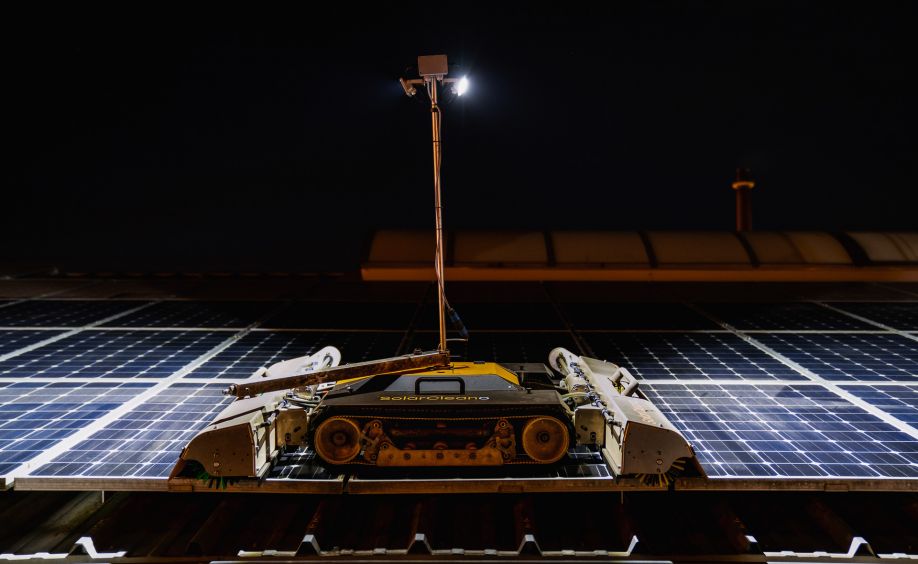There are several challenges, mainly due to the area where the cleaning is needed. For example, in Saudi Arabia, there are a lot of sandstorms. Therefore, the panels need to be dry cleaned almost every day.
 Solar Panel Cleaning and the Importance of Preventative Maintenance
Solar Panel Cleaning and the Importance of Preventative Maintenance

Q&A with Romain Gourmet | SolarCleano
Tell us about yourself and SolarCleano.
My name is Romain and I am from Belgium. I have worked at SolarCleano for more than 3 years with the current position of sales manager. We have the chance at Solarcleano to have a team talking at least 10 languages and working in more than 55 countries.
SolarCleano is a dynamic young company created in 2017, by a cleaner and an engineer. The idea of SolarCleano was that cleaners needed a more efficient way than the manual cleaning used for solar arrays. At first, the company was developed thanks to our customers feedbacks from Germany and France. 5 years later, more than 500 robots can be found all around the world.
In order to answer every cleaner’s needs, we developed a large range of products, from the smallest, the M1, to the biggest robot, the B1. All our robots can be equipped with different kinds of brushes and can work with or without water, which proves that our main objective is to always satisfy our customers interests.
Share with us why keeping solar panels clean is so important?
The main reason is the loss of efficiency. The loss of efficiency cannot be always felt, but on large scale facilities, a gap is easily made between the cost of electricity and the declining performance due to soiling.

F1 robot for wet and dry solar panel cleaning with a camera for safe remote operation
When a solar panel is not correctly maintained, its durability can heavily decrease. As well, the shadow made by the soiling can create hotspots, which is a small point of shadow that makes the cells of the panel explode.
Why do you think cleaning solar panels has been a widely overlooked task to this point?
At the beginning of the solar industry, the belief was that “rain does the job”. Meaning that it was not necessary to clean the solar panels. We can compare the solar panel with a car; if the car is left outside every day, it remains dirty, even with the rain.
The issue is that most solar panel facilities are relatively new, most of them were built within the last 10 years. After 5 years, we realized that soiling began to appear on the panels, followed by the loss of efficiency.
We came to the conclusion that a lot of negligence can cause major performance problems.
What are the challenges with solar panel cleaning?
There are several challenges, mainly due to the area where the cleaning is needed. For example, in Saudi Arabia, there are a lot of sandstorms. Therefore, the panels need to be dry cleaned almost every day. On the other hand, in the islands of England, or in northern Europe, there are many bird droppings, which means that the panels require to be cleaned with water and powerful brushes. In the countries with a high level of humidity, the soiling may be very sticky. In this case, the cleaners must adapt their brushes according to the situation.
One of the biggest challenges is the mindset of people thinking that solar panels don’t need to be cleaned. While more and more countries understand the matter of cleaning, there are still areas where it is not practiced.
How is SolarCleano responding to these challenges?
Thanks to our client feedbacks and experience we have the opportunity to adapt ourselves, our robots and our brushes. For instance, our products are not the same in South Africa than in Canada. Moreover, the advices given to our customers also change according to their area.
As our objective is to inform about the necessity of solar cleaning, we try to organize as many trade missions, roadshows and demonstrations as possible. We also participate in a lot of conferences around the world.
Why have you chosen to develop robotic solutions over other options?
There are many ways to clean a solar panel. A person can do it manually, with a brush, but these solar arrays are not very secured in every situation and can cause injury. As well there is also a rail system for cleaning, which can easily be attached to the panels. It is safe, fast and cheap, but it can only work on ground installations. Finally, it is possible to set brushes on a tractor, which is only useful on big facilities on the ground.
The key value of our robot is that it can be used in any given situation. It is safe, fast and useful on any kind of facility.
Why robotic cleaning is important in the preventive maintenance of solar fields?
Preventive maintenance with robots helps to avoid disasters and negative consequences on the solar panels. The main goal of preventive maintenance is to also avoid performance loss and damages on the panels.
The robots allow all of it to be done quickly and safely. We are currently developing digital tools with an AI to collect data.
The content & opinions in this article are the author’s and do not necessarily represent the views of AltEnergyMag
Comments (0)
This post does not have any comments. Be the first to leave a comment below.
